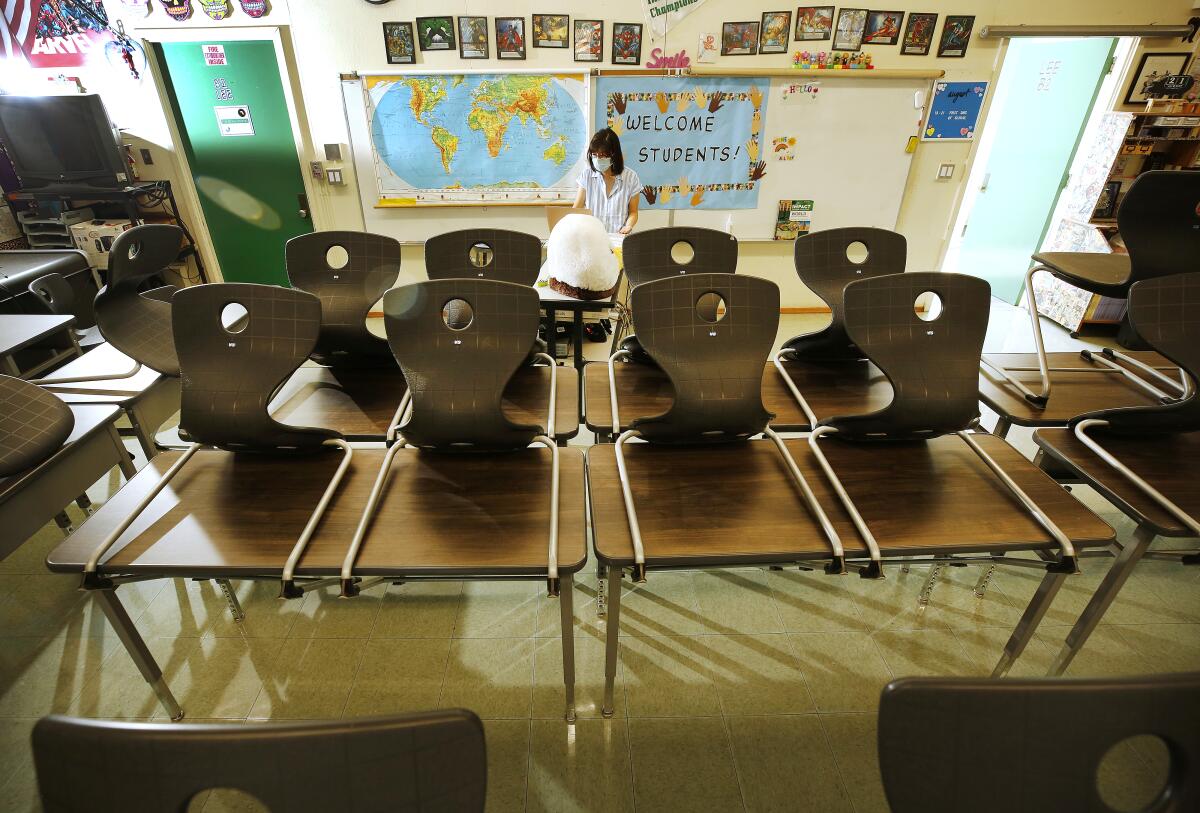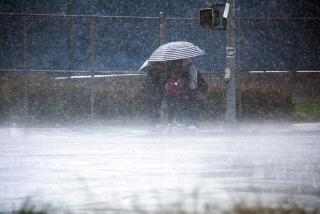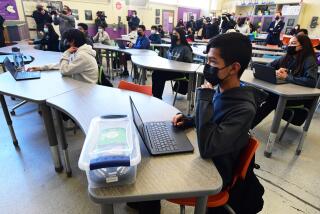Dangerous COVID-19 surge leads to hard shutdown of L.A. public schools

- Share via
Prospects for reopening campuses this school year dimmed Monday for hundreds of thousands of Los Angeles students with the hard shutdown of all in-person tutoring and special services amid a dangerous coronavirus surge — and officials declining to estimate when children could return to classrooms.
The decision by the nation’s second-largest school district stands to intensify an impassioned debate over the safety of operating schools that divides parents, educators and experts. Throughout California, school districts are responding differently.
Siding with L.A. Unified was California Federation of Teachers President Jeff Freitas. But also on Monday, the Los Angeles-adjacent Torrance and Las Virgenes districts were welcoming back many students.
In remarks Monday, L.A. schools Supt. Austin Beutner announced that campus closures will take full effect by Thursday, a move that immediately affects some 4,000 students in kindergarten through 12th grade and outdoor conditioning for athletes. Thousands of other eligible students were waiting for services to become available.
“My commitment has been throughout to protect the health and safety of all in the school community,” Beutner said in an interview with The Times. “We have an imperative to get kids back to school as soon as possible the safest way possible. But all that comes through the front door, and the front door is what is COVID in the overall Los Angeles community. Right now it’s at extraordinary and quite dangerous levels.”
Beutner’s emergency directive came on the first day of a sweeping stay-at-home order across much of California and as Los Angeles County’s coronavirus rates reached unprecedented numbers.
The L.A. teachers union called Beutner’s decision “the right step.”
“Educators wanted to be closer to a physical return that reunites us with our students, but instead we are moving farther away,” said Cecily Myart-Cruz, president of United Teachers Los Angeles. In remarks Friday on social media, she said that it’s become a question of “if” rather than “when” campuses would reopen for the spring semester.
State teachers union leader Freitas called for all California districts to shut down until at least January.
“We think every school district in the state should be following suit because of these dire numbers,” Freitas said.
L.A. school board President Richard Vladovic said he didn’t see how a full campus return — even a staggered, partly online schedule — could happen before mid-February. Even then, he said, on-campus instruction would probably be available initially to only the youngest students.
For parents in L.A., Monday’s announcement was the latest installment in a long-running, disheartening story line.
Erika Muñoz, a Huntington Park mother of three students and a toddler, said she started anticipating the reopening of campuses when the district recently distributed a survey asking parents to choose between a staggered on-campus schedule or distance-learning only.
Online learning has been especially difficult for her 4-year-old, who is in transitional kindergarten. A return to campus also would allow Muñoz to look for a job.
When she heard about the shutdown, “it was emotional,” she said. “It’s like you start feeling down again because you have these hopes and you start making plans — and then all of a sudden they bring you back down.”
Improving online instruction is paramount at this juncture, rather than just offering “more of the same,” said Seth Litt, executive director of the local advocacy group Parent Revolution.
The COVID surge has prompted a range of responses across the state.
The school board in San Bernardino City Unified, which serves about 47,000 students, voted Nov. 17 to keep campuses closed in that district, the state’s eighth-largest, for the remainder of the school year.
Officials with the 11,000-student Evergreen School District in San Jose took that step Friday, but will continue to offer some in-person services to students with special needs. The Fort Sage School District, with about 500 students living near the Nevada border, also closed its campuses for the remainder of 2020.
In contrast on Monday, Las Virgenes Unified, with about 11,000 students in northwest L.A. County, expanded in-person instruction — bringing back third-graders. About three-quarters of students in transitional kindergarten through second grade had already returned under a county-approved waiver that is available to any school.
Torrance Unified opened Monday for kindergarten students.
The experience of schools that have opened with strong safety measures justifies this approach, said Robert Ostmann, a spokesman for the Los Alamitos Unified School District in Orange County, which was one of the first to reopen in September.
“We’re very confident that we don’t have any spread within the schools and that the cases that we do have are from outside school,” he said. “If we were seeing a trend toward community spread within the schools, then we would certainly reevaluate.”
About 77% of students are attending in-person classes.
Campuses in more prosperous communities have been more likely to reopen: The poverty rate in San Bernardino City Unified is about 88%, compared with about 12% in Las Virgenes Unified. This divide separating the poor from the more affluent also is reflected in infection rates. Lower-income areas have been hit harder.
Some schools in counties adjacent to Los Angeles had a period when they could fully reopen and, if they did, can remain open under state guidelines.
The picture across the nation also is varied. Campuses in Philadelphia are closed. Chicago is planning to open schools in January — and the teachers union has taken legal action to challenge the decision.
Meanwhile, parents in New York City on Monday dealt with another roller coaster twist — as elementary campuses reopened in the nation’s largest school system.
Beutner said a similar scenario could have happened in Los Angeles if infection rates were as low as in New York City.
L.A. Unified was barely beginning to unlock the schoolyard gates — with fewer than 1% of students receiving any in-person services. In early October, the district began offering one-on-one tutoring. And it later began instruction for groups as large as three and providing other services, such as assessments for students with disabilities. The goal was to prioritize the most vulnerable students.
Negotiations are underway with the teachers union to extend a distance-learning agreement set to expire at the end of the year.
In remarks prepared for a Monday broadcast, Beutner said the crisis necessitates a “Marshall Plan for Schools,” alluding to the all-in, high-cost program by the United States to rebuild Europe after World War II, an effort that was perceived as promoting the common good.
The latter-day plan, he said, should contain four essential elements: creating a safe school environment; school-based coronavirus testing and contact tracing; mental-health support for children; and funding for in-person instruction next summer.
L.A. Unified, he added, already is planning “for a summer session like no other” to help students “recover lost learning opportunities, add enrichment to their lives and help them deal with the anxiety and trauma this crisis has brought into their homes.”
Billions of dollars in federal COVID relief have flowed to the nation’s schools already, but Beutner called for an additional $125-billion package, about a fifth of what was earmarked for the Paycheck Protection Program, which provided ultra-low-interest loans to businesses.
He called the proposed school aid “a small price to pay to give millions of children a shot at the American dream and their families a chance to get back to work.” He also called for teachers and other school staff to be near the top of the list for receiving vaccines.
In the interview, he said schools should be prioritized for reopening ahead of card rooms, bars, gyms, indoor malls and even restaurants.
“Schools must come first, not last,” Beutner said.
At the same time, he added, idled employees should receive government subsidies until their work can resume.
The district on Monday also released some results of its parent survey, indicating that more than a third of parents want to send their children back to campus. Those who responded more recently, said Beutner, are less eager to return, opting instead to remain with distance-only learning.
A much smaller parallel survey from an outside group, Speak Up, found similar results, but also a notable racial and ethnic divide: 69% of white parents want to send their children back next semester if strict safety measures are in place. This compares to 33% of Black parents and 37% of Latino parents who feel comfortable doing so.
The vast majority of parents across all racial groups said that parents should have the option to send their children to campus next semester.
More to Read
Sign up for Essential California
The most important California stories and recommendations in your inbox every morning.
You may occasionally receive promotional content from the Los Angeles Times.












